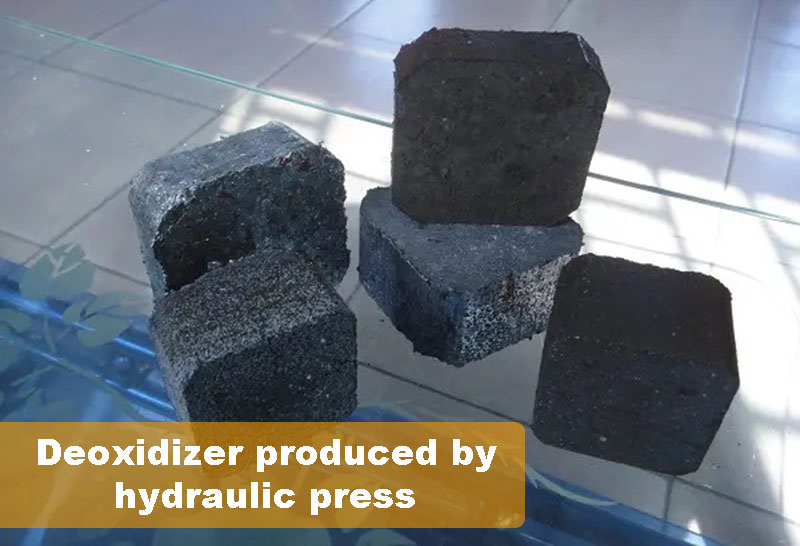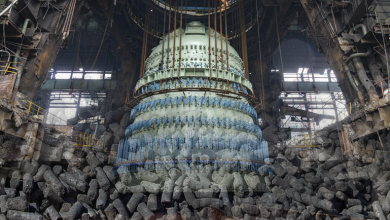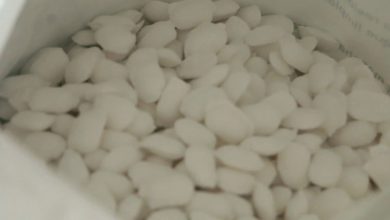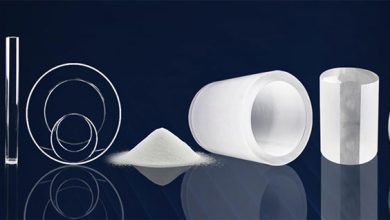Why Deoxidation in Steelmaking
Deoxidation plays a dual role in the steelmaking process. On one hand, during steel heating, oxygen is needed to react with harmful substances like carbon and sulfur, improving steel quality. On the other hand, oxygen in the steel affects its mechanical properties and strength in three main ways:
Inclusion Formation: Excess oxygen combines with other elements in the steel during solidification, forming non-metallic inclusions that disrupt the steel matrix, reducing mechanical properties like strength, impact toughness, and ductility, as well as magnetic and welding properties.
Bubble Formation: High oxygen content in the steel reacts with carbon during casting, generating CO gas, leading to defects like porosity and looseness in the ingot, and even defects like rising, potentially causing ingot scrap.
Aggravating Sulfur Harm: Oxygen reduces sulfur solubility in steel, exacerbating sulfur’s harmful effects and increasing the steel’s susceptibility to hot brittleness.
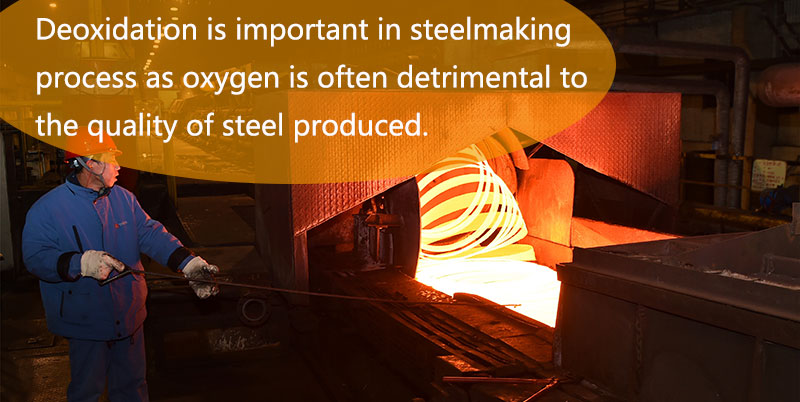
Why is Oxygen Introduced During Steelmaking
During the steelmaking process, oxygen is introduced into the molten iron to remove harmful impurities like carbon and sulfur. This is typically done by blowing oxygen or adding oxidants, which react with elements in the molten iron, forming gases or higher melting point oxides. This reduces the levels of harmful impurities and also raises the temperature of the molten iron through the heat released during oxidation reactions.
In terms of the strength of oxygen binding with various elements in molten steel, the order from weak to strong is as follows: chromium, manganese, carbon, silicon, vanadium, titanium, boron, aluminum, zirconium, and calcium. Therefore, commonly used deoxidizers in steelmaking include alloys composed of silicon, manganese, aluminum, and calcium.
![]()
Common Deoxidizers
Si-Al-Ba-Ca
Silicon-Aluminum-Barium-Calcium (Si-Al-Ba-Ca) is a composite deoxidizer ideal for various steelmaking deoxidation processes, particularly suited for converter steelmaking. It exhibits strong deoxidation and desulfurization effects, improving steel fluidity, solving nozzle clogging issues, and reducing gas content and inclusions.
Both silicon and barium in Si-Al-Ba-Ca react with oxygen to form oxide impurities, facilitating their removal from the steel surface. Additionally, calcium and barium contribute to reducing harmful impurities like sulfur and phosphorus, thus minimizing their presence in the steel. Barium effectively lowers the vapor pressure of calcium within the steelmaking temperature range, enhancing its utilization rate.
Steel deoxidation experiments have demonstrated that Si-Al-Ba-Ca yields superior results compared to using a silicon-calcium composite deoxidizer.
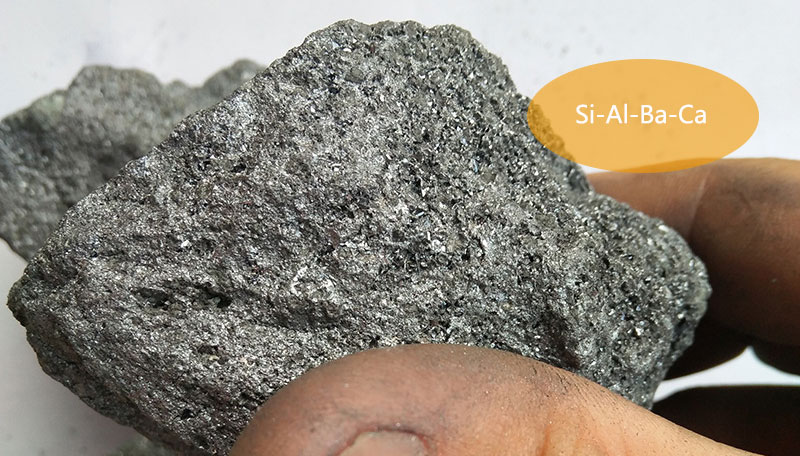
Furthermore, Si-Al-Ba-Ca stands out as the best deoxidizer and desulfurizer among barium-based alloys, achieving the lowest oxygen content in steel. The complex inclusions formed, including calcium, barium, and aluminum, easily float to the surface, resulting in cleaner steel with enhanced impact toughness and machinability. Si-Al-Ba-Ca alloy outperforms pure aluminum, ferrosilicon, and calcium-silicon alloys, boasting higher alloy utilization rates.
Si-Al-Ba-Ca has low solubility in molten steel but can dissolve calcium and reduce calcium vapor pressure, significantly enhancing the role of calcium in deoxidation and non-metallic inclusion modification.
It’s essential to add Si-Al-Ba-Ca gradually during steel pouring: add a small amount when the steel starts pouring, gradually increase the dosage as steel is being tapped, and complete the addition just before finishing the tapping process.
Ferrosilicon
Ferrosilicon or FeSi, produced by smelting coke, steel scrap, and quartz (or silica) in an electric furnace, serves as a crucial deoxidizer in steelmaking. Due to its affinity for oxygen, ferrosilicon readily forms silicon dioxide, making it indispensable for steel deoxidation. Moreover, the exothermic reaction during SiO2 formation elevates steel temperature, reducing energy consumption in steelmaking. Widely used as an alloying agent, silicon iron finds applications in low-alloy structural steel, tool steel, spring steel, bearing steel, heat-resistant steel, and electrical silicon steel production, including single-crystal silicon manufacturing and non-ferrous metal alloy preparation.
![]()
Why are ferrosilicon and ferrosilicon indispensable deoxidizers in steelmaking?
With silicon’s strong affinity for oxygen, adding ferrosilicon in steelmaking initiates the following deoxidation reaction: 2FeO + Si = 2Fe + SiO2. Silicon dioxide, the deoxidation byproduct, is lighter than molten steel, floating to the surface and entering the slag, thereby removing oxygen from the steel.
This process significantly enhances steel strength, hardness, elasticity, and magnetic permeability while reducing hysteresis loss in transformer steel.
Silicomanganese alloy
Chemical formula FeMn58Si14, composed of manganese, silicon, iron, and other elements, silicomanganese alloy is a crucial ferroalloy in steelmaking. Manganese, in solid solution, strengthens steel by improving ferrite’s strength, enhancing mechanical properties, and increasing steel’s strength, ductility, toughness, and wear resistance. Silicon, in solid form, also boosts steel strength, fatigue limit, corrosion resistance, and wear resistance. Hence, silicomanganese alloy is an indispensable alloy in steelmaking.
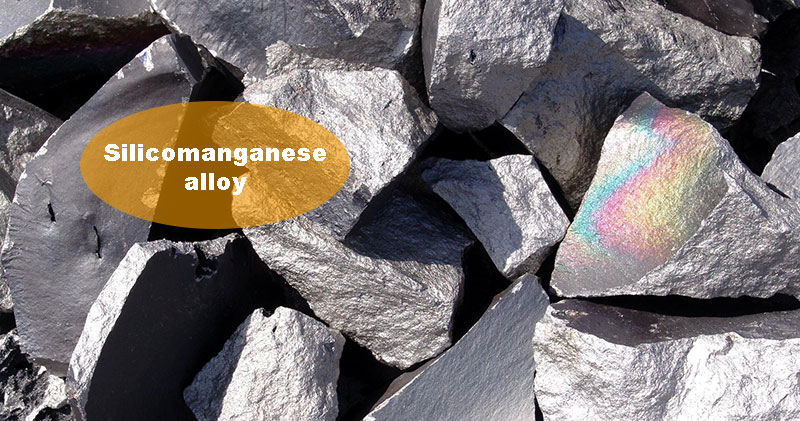
Aluminum chips
Aluminum has long been a primary deoxidizer in steelmaking, especially for producing low-carbon stabilized steel varieties ideal for cold-rolled sheets. However, its lightweight nature causes it to float on the steel surface during deoxidation, leading to oxidation and significant loss. To address this, steel researchers have developed a new deoxidizer: aluminum-iron deoxidizer.

As an aluminum-chip-containing material, aluminum dross also have been developed by briquetting as a kind of deoxidizer for steel making.
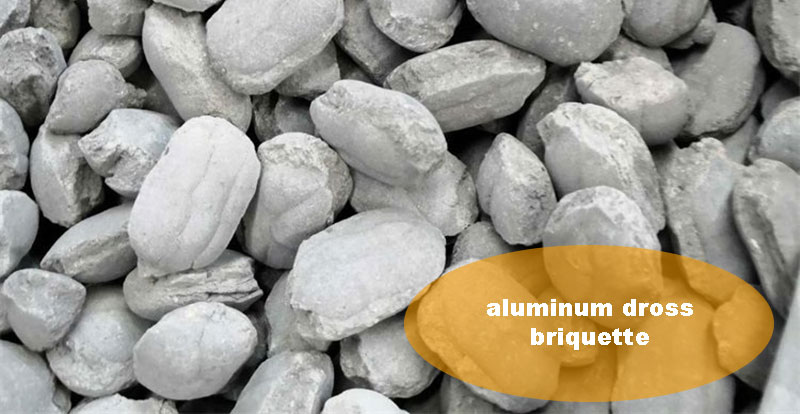
Ferromanganese
Ferromanganese is a commonly used deoxidizer.
Manganese is an essential element in the steel industry, present in almost all types of steel. It refines steel grain, enhances hardenability, improves resistance to air corrosion, and boosts forgeability and rollability.
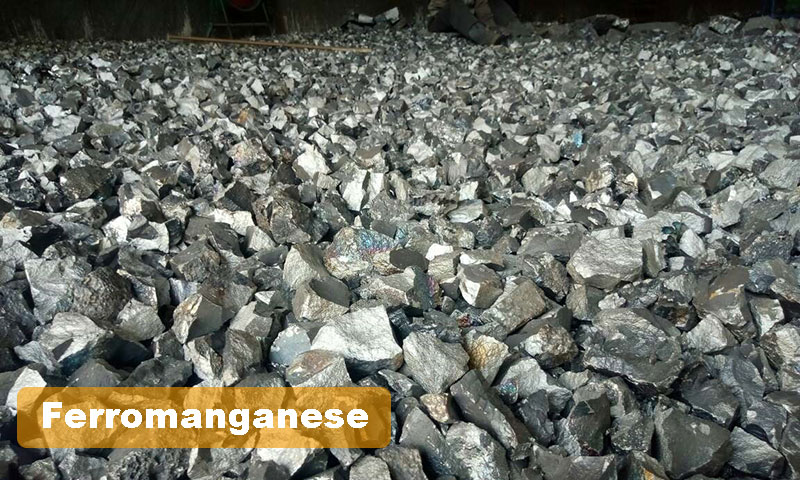
Which deoxidizer will be the choice
These deoxidizers, with their varying compositions, enhance different beneficial elements in the steel, making them all valuable. However, the choice of which deoxidizer to use should be based on the specific performance requirements of the steel being produced.
The purpose of steelmaking is to effectively control the carbon content in molten iron while reducing or eliminating the detrimental effects of elements like P, S, N, and O on steel properties. It also aims to retain or increase the levels of beneficial elements like Si, Mn, Ni, and Cr to enhance steel performance. This ensures that these elements are present in optimal proportions, resulting in steel that meets specific requirements and offers the best performance.
The use of deoxidizers should prioritize steel quality while selecting cost-effective iron alloys to reduce steel production costs. Common deoxidizers used in converters include: Fe-Mn, Fe-Si, Mn-Si alloys, Ca-Si alloys, aluminum, Fe-Al, composite deoxidizers, etc.
Briquetting the deoxidizer fine
In steelmaking, various deoxidizers generate many powdered particles during production and transportation. Briquetting becomes necessary to utilize these valuable particles. Depending on the plasticity of the raw materials and the need to add other elements, forming methods can include direct briquetting without binder or mixed with binder then briquetitng.
Roller briquetting machine and hydraulic press are two commonly used equipment for briquetting deoxidizers in steelmaking.
